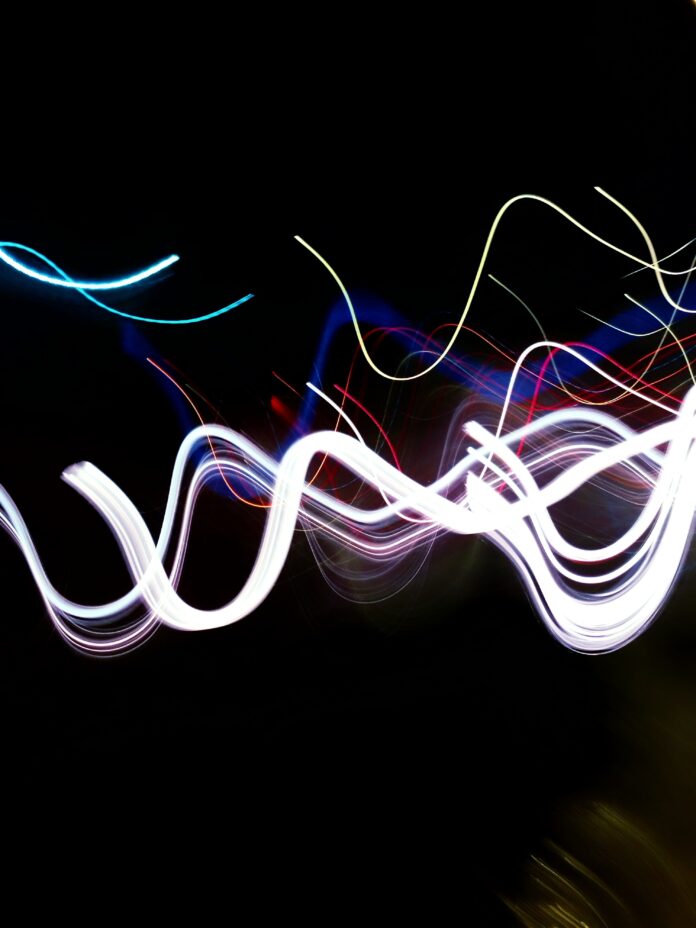Wind Turbines: Harnessing Nature’s Power for Sustainable Energy Generation
In an era where the global demand for clean and sustainable energy has never been more critical, wind turbines stand as remarkable symbols of technological ingenuity and environmental stewardship. These towering structures, with their massive rotating blades, are an embodiment of humanity’s pursuit of harnessing the inexhaustible power of the wind to generate electricity. With a rich history dating back centuries, wind turbines have evolved from simple mechanical devices to sophisticated engineering marvels, playing a pivotal role in the transition towards a greener energy landscape.
At its core, a wind turbine is a machine designed to convert the kinetic energy present in wind into mechanical energy, which is then transformed into electrical energy through a series of complex mechanisms. The fundamental principle behind wind turbines is rooted in the physical interaction between moving air masses and the blades of the turbine. As the wind blows, it imparts kinetic energy to the blades, causing them to rotate around a central hub. This rotational movement sets in motion an intricate system of gears and generators housed within the turbine’s nacelle – a protective casing atop the tower.
The history of wind turbines dates back to ancient civilizations that utilized wind power for various tasks such as grinding grain and pumping water. However, it was not until the late 19th and early 20th centuries that wind power began to be harnessed for electricity generation. The development of electricity-generating wind turbines gained momentum in the 1970s as the world grappled with the oil crisis and growing concerns about environmental degradation. Since then, wind turbine technology has advanced by leaps and bounds, leading to the creation of highly efficient and reliable systems that dot landscapes around the world.
Modern wind turbines can be classified into two primary categories: horizontal-axis wind turbines (HAWTs) and vertical-axis wind turbines (VAWTs). HAWTs are the most prevalent and recognizable type, featuring a horizontal rotor shaft that is perpendicular to the tower’s axis. This design allows the blades to face into the wind, optimizing energy capture. VAWTs, on the other hand, have a rotor shaft that is vertical to the ground and can capture wind from any direction. While VAWTs offer certain advantages in terms of simplicity and suitability for urban environments, HAWTs remain the dominant choice for large-scale energy production due to their higher efficiency and power output.
The key components of a modern wind turbine include the rotor, the nacelle, the tower, and the foundation. The rotor, comprised of two to three aerodynamically designed blades, is responsible for capturing the kinetic energy of the wind. The nacelle houses the gearbox, generator, and control systems, all of which work in unison to transform mechanical energy into electricity. The tower provides the necessary height to position the rotor at an optimal height above ground level, where wind speeds are generally higher and more consistent. The foundation anchors the entire structure securely to the ground, ensuring stability and safety in the face of varying weather conditions.
One of the defining characteristics of wind turbines is their scalability. Turbines can vary in size from small systems designed for residential use to colossal offshore installations that stretch hundreds of feet into the sky. Offshore wind farms, in particular, have gained prominence as they offer several advantages over onshore installations, including access to stronger and more consistent wind patterns and reduced visual and noise impacts on populated areas. These offshore installations, despite their higher upfront costs, contribute significantly to the overall capacity of renewable energy generation.
The environmental benefits of wind turbines are substantial and align closely with the global goals of reducing greenhouse gas emissions and mitigating climate change. Wind energy is inherently clean, producing no direct emissions or air pollutants during operation. Unlike fossil fuel-based power generation, wind turbines do not consume water for cooling purposes, alleviating pressures on water resources in arid regions. Furthermore, wind energy significantly reduces the need for finite fossil fuels, thereby enhancing energy security and reducing dependency on imported fuels.
The journey of wind turbine technology has been marked by relentless innovation and engineering advancements. Improvements in blade design, material selection, aerodynamics, and control systems have contributed to increased energy capture efficiency and reduced operational costs. Moreover, the integration of digital technologies, such as sensors, data analytics, and machine learning algorithms, has ushered in a new era of smart wind turbines. These intelligent systems can optimize their performance in real-time by adjusting blade angles, yaw positions, and other parameters based on wind conditions, ultimately leading to higher energy yields.
Despite the undeniable benefits of wind turbines, challenges persist. Intermittency and variability in wind patterns can lead to fluctuations in energy output, which can strain power grid stability. However, advancements in energy storage technologies, such as large-scale batteries, are helping to mitigate this issue by storing excess energy during periods of high wind production and releasing it during lulls. Additionally, concerns related to the visual and noise impacts of wind farms on local communities have spurred research into better siting strategies and improved noise-reduction technologies.
In conclusion, wind turbines stand as iconic symbols of humanity’s quest for sustainable energy solutions. These towering structures, with their intricate design and mechanical prowess, represent a harmonious blend of nature’s power and human innovation. From their humble origins as mechanical devices to their current status as cutting-edge generators of clean electricity, wind turbines continue to evolve, providing a beacon of hope for a greener and more sustainable energy future. As technology advances and society’s commitment to renewable energy strengthens, wind turbines are poised to play an increasingly vital role in shaping the energy landscape of tomorrow.
Renewable Energy Source:
Wind turbines harness the kinetic energy of the wind, a renewable and abundant resource that does not deplete with usage. Unlike fossil fuels, wind energy generation produces no greenhouse gas emissions or air pollutants, making it a clean and sustainable solution for electricity generation.
Scalability and Versatility:
Wind turbines come in a range of sizes, from small residential units to massive offshore installations. This scalability allows them to be deployed in diverse settings, including remote areas, urban environments, and offshore locations, catering to various energy needs.
Advanced Technology and Innovation:
Wind turbine technology has evolved significantly, incorporating advancements in blade design, aerodynamics, materials, and control systems. Integration of digital technologies like sensors and data analytics has led to smart wind turbines that optimize performance in real-time, enhancing energy capture efficiency and grid integration.
Reduced Environmental Impact:
Wind energy contributes to a cleaner environment by minimizing water consumption (unlike fossil fuel power plants) and reducing the demand for finite fossil fuels. Wind turbines have a smaller ecological footprint compared to conventional power plants and contribute to mitigating climate change by displacing carbon-intensive energy sources.
Offshore Wind Farms:
Offshore wind farms have gained prominence due to their access to stronger and more consistent wind patterns. These installations minimize visual and noise impacts on populated areas and unlock the potential for high-capacity electricity generation, further expanding the reach of renewable energy.
Wind turbines, those magnificent structures that grace the landscapes and seascapes around the world, embody the fusion of human innovation with the raw power of nature. Standing tall, their towering presence is a testament to the relentless pursuit of cleaner, more sustainable energy sources. From the gentle whirr of their rotating blades to the intricate hum of their internal machinery, wind turbines speak of a harmonious coexistence between technological advancement and environmental responsibility.
As the wind whispers through the blades, a symphony of physics and engineering unfolds. The aerodynamically designed blades are no ordinary creations; they are the result of meticulous research and testing. Their shape and curvature are carefully crafted to capture the maximum kinetic energy from the wind, ensuring optimal efficiency in energy conversion. These blades can stretch to incredible lengths, each span reaching the size of a commercial airplane wing. The movement of these colossal blades is a mesmerizing sight, a dance choreographed by the ever-shifting currents of air.
At the heart of these giants lies the nacelle, a sophisticated chamber that houses the turbine’s vital organs. Within this enclosure, the gearbox orchestrates a complex mechanical ballet. The low rotational speed of the blades is transformed into the high-speed rotation required by the generator to produce electricity. This transformation is not without its challenges; the gearbox must withstand tremendous forces and torque, requiring the use of advanced materials and precision engineering.
High above the ground, the tower rises like a sentinel, anchoring the turbine in its quest to capture the winds. These towers are engineering marvels in themselves, constructed to withstand the forces of nature while providing a stable platform for the turbine’s operation and maintenance. In some cases, these towers can reach the height of a 30-story building, allowing the blades to reach the higher altitude winds that carry greater energy potential.
The journey to bring wind turbines to life involves an orchestra of expertise. Engineers, physicists, meteorologists, and environmental specialists all play their part. The siting of a wind farm is a delicate dance with the environment. Factors such as wind patterns, bird migratory routes, and community landscapes must all be considered. The goal is to harness the wind’s energy without disrupting the ecosystems that depend on it.
Maintenance of these colossal structures is not for the faint-hearted. Wind turbine technicians, often suspended hundreds of feet in the air, conduct intricate inspections and repairs. Their work ensures the turbines operate optimally, delivering the expected energy output. Technological innovation has also led to the development of drones capable of conducting inspections and maintenance tasks, reducing the risks associated with human intervention.
The relationship between wind turbines and their surrounding communities is a multifaceted one. Local economies can benefit from wind farms through job creation, lease payments to landowners, and increased tax revenue. However, concerns about the visual impact, noise pollution, and potential effects on property values have sparked debates in some areas. Striking a balance between the advantages of renewable energy and the preferences of local communities is an ongoing challenge.
Offshore wind farms, an innovation born of the need to expand renewable energy capacities, have gained prominence in recent years. These installations, floating gracefully on the open sea, tap into the powerful and consistent winds that sweep across the oceans. The engineering complexities of building and maintaining offshore wind farms are immense, yet they offer the promise of unlocking vast amounts of clean energy. Moreover, they mitigate some of the challenges faced by onshore installations, such as land scarcity and visual impact.
In the grand tapestry of renewable energy, wind turbines stand as vibrant threads, woven through time and space. They evoke a sense of wonder and possibility, reminding us that our quest for sustainability is an ongoing journey. As technology continues to evolve, as blades continue to spin, and as the wind continues to carry its invisible energy, wind turbines will remain as beacons of hope for a cleaner, greener future.


















